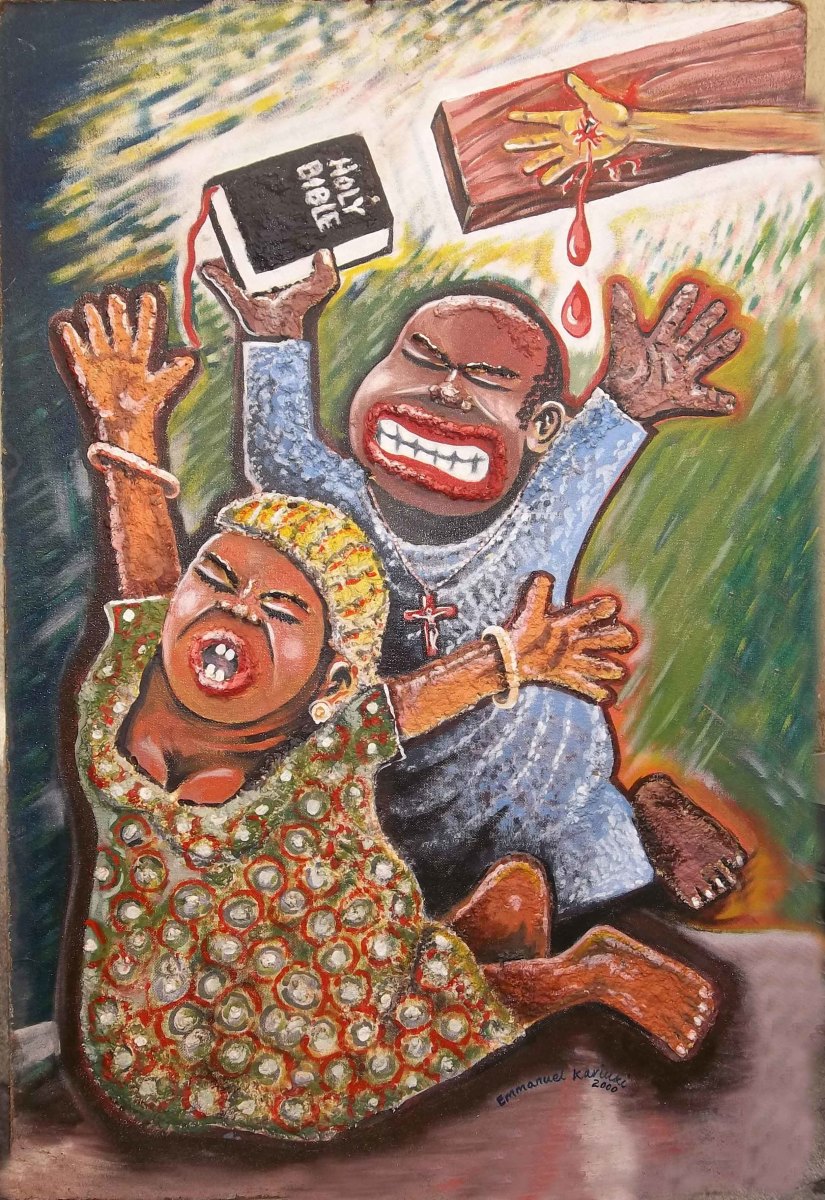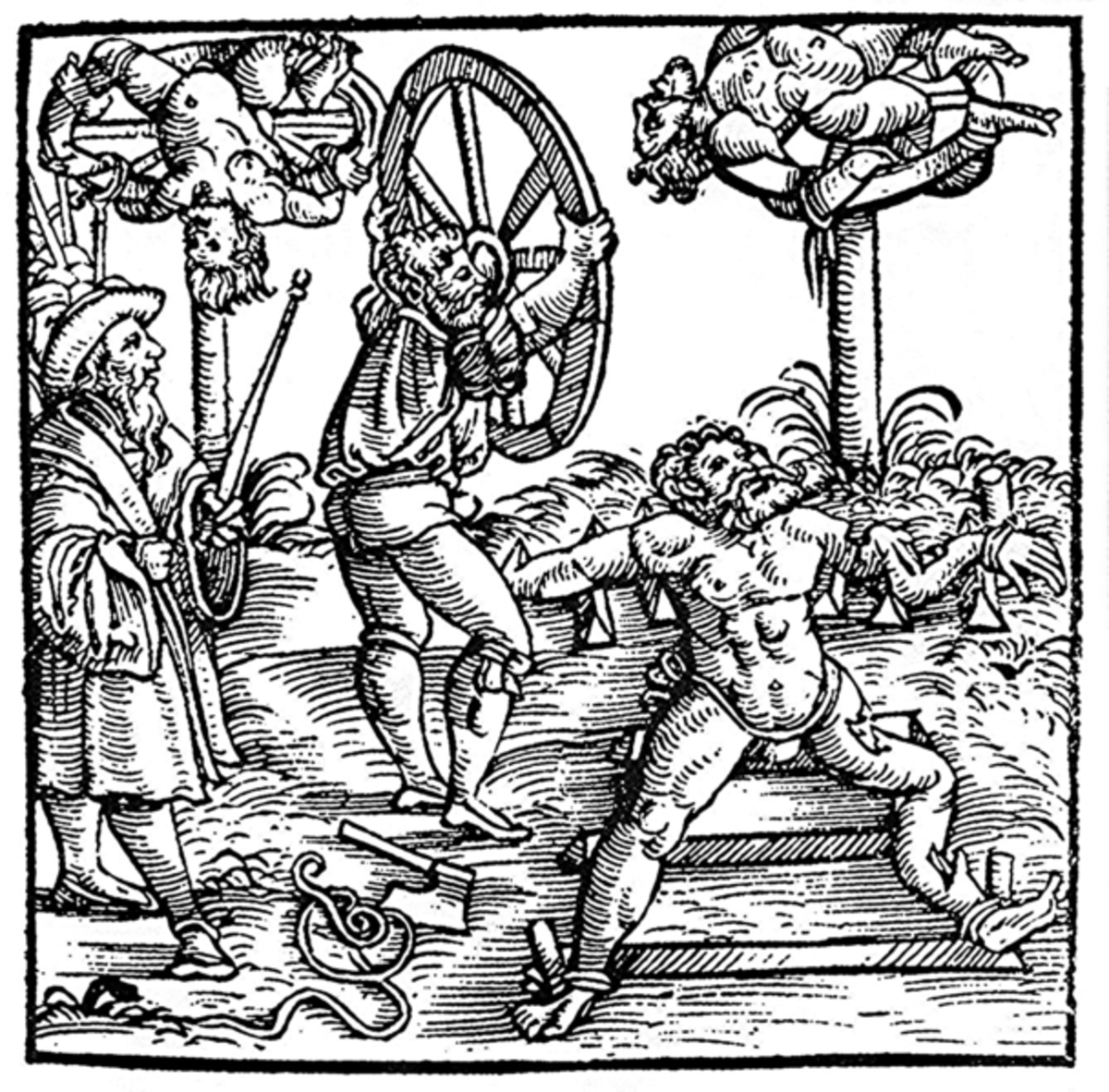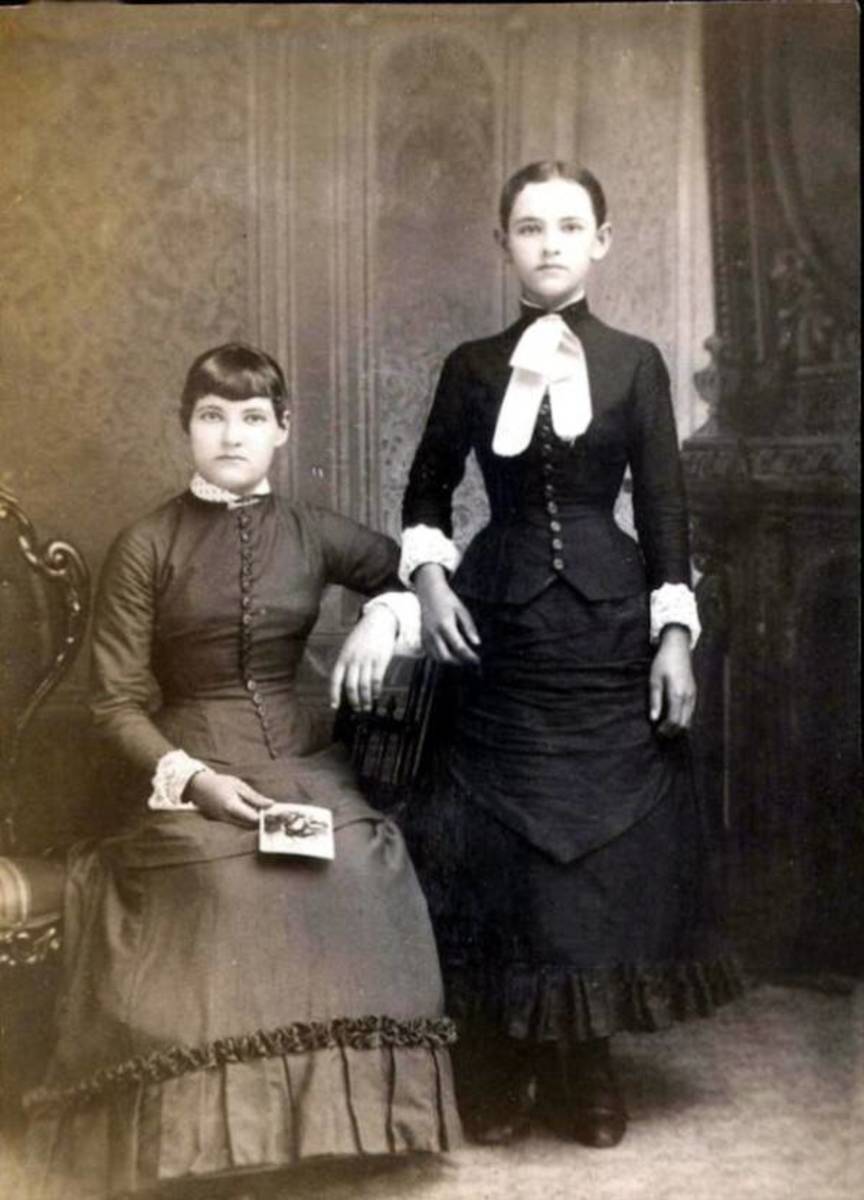The Poor Goths
What do Gothic architecture, Gothic letters, Gothic literature and Gothic Metal have in common?
Of course, you say; they are all Gothic.
Wrong. What they have in common is the fact that they all are not Gothic at all.
Just as Vandalism doesn't have anything to do with the Vandals.
In both cases, an extinct people has been attributed things that don't really have anything to do with them.
Goths and Vandals were two Teutonic peoples, who appeared in history towards the end of Antiquity. The reason they got a bad reputation was the fact that they were often in conflict with the Romans - but it is debatable whether they were more violent than the Romans themselves. However, they may have contributed to the decline and fall of the Western Roman empire, and this is a case where the victors did not write the history, perhaps for the simple reason that they were not very literate, especially in comparison with the Romans.
Both peoples are known as wanderers, but it is not quite clear how far the peoples themselves wandered, and how far just their respektive languages. (Not all speakers of English today are descended from Englishmen.)
As far as the Vandals are concerned, they seem to have wandered from the Vistula area, in today's Poland, south-west through Gallia (present France) to Spain, from there to North Africa, from there north again to Italy - at least that's one theory - and in the year 455, they plundered Rome, which turned out to be a city not quite eternal after all.
The emperor Petronius Maximus died during these days, but he probably was killed by Burgundians, not by Vandals; nevertheless, this may be the origin of the present term "vandalism".
The last Vandal king, Gelinger, died in 553 in exile the Eastern Roman (Byzantian) empire.
From the year 350, the Vandals belonged to the Arian church (named after the priest Arius or Areios (please don't mix them up with "Aryans"!). Little is known about their language.
More about that of the Goths, though.
We don't know for sure where they had their origin. A Gothic-Roman writer from late antiquity, Jordanes (who died in 552 a. D.), ascertained that they came from Scandinavia, but that is not certain (although the names Jutland - Danish Jylland - and Götaland for the southern region in Sweden, as well as Gotland for the largest island in the Baltic, may all have an etymological relation to the word "Goth"). Jordanes himself came from the Balkan peninsula, and it is not known whether he himself ever visited Northern Europe.
The first place, where we are certain that Goths were living, is not very far from the first place of the Vandals: around the delta of the Vistula river, in what is now the Polish coast, at the beginning of our chronology. In their own language, the called themselves gutans.
It is believed that during the second half of the second century, some of the Goths emigrated to the Black Sea; at least their language did, and the peninsula of Crimea was to be the last place where it was spoken. Of course, language and genes don't always keep company, so it has been much debated whether people actually moved or not.
A hundred years later, the Goths were divided into two goups - Ostrogoths and Visigoths. In 488, Italy was conquered by the Ostrogoth Þiudareiks, better known as Theoderic, but in the Icelandic Edda as well as on the Swedish Röke Runestone as Tjodrik, and in the German medieval Song of the Nibelungs also as Dietrich von Bern (where "Bern" is not the present capital of Switzerland - that city would be founded only in 1191 - but Verona).
Þiudareiks took up his residence in Ravenna in northern Italy. It was probably there, in his time, that the Codex Argenteus was made. In English, this manuscript is usually called "The Silver Bible", although it is doubtful if it ever contained the complete Bible. The preserved 188 folia contain the four gospels, or most of them, and it is thought that the complete manuscript had 336 folia, thus less than twice as much, and the gospels is much less than half the Bible.
Anyhow, the text in the codex is a Gothic translation made by the Arian bishop Wulfila (in English, his name is often truncated to Ulfila). Nowadays, it is of course available on line - http://app.ub.uu.se/arv/codex/faksimiledition/contents.html
The Codex is now in the University library in Uppsala, Sweden, where if was brought from Prague after the Battle of Prague at the end of the Thirty Years' War. This text is our chief source of knowledge about the Gothic language.
Ulfila lived from about 310 to 383 a. D., so he was an older contemporary of his more famous translator colleague translator colleague Hieronymus (in English ´known as Jerome), who lived about 347 to 420 and is most known as the author of the classical Latin translation of the Bible, the Versio Vulgata.
I don't know if he two gentlemen ever met. Perhaps not, as they belonged to competing churches and probably, if they knew about each other's existence, regarded each other as heretics; Hieronymus belonged to the Orthodox church (not the Roman Catholic, because it didn't exist yet; it would split from the Orthodox one only in 1054), and Ulfila to the Arian one.
The dogmatical difference between the two churches is rather complex, but essentially the Orthodox thought Christ to be "true god and true man", born and not created, while the Arians thought him to be the first of all created beings, less than god but more than man. The relation between these two churches were about as cordial as that between Stalinists and Trotskysts in our time (Christianity, too, is essentially totalitarian).
The Gothic name Wulfila means "Little Wolf"; the Gothic suffix -la is the same diminutive as the South German -lein. It can be found also in another name - Attila. No, Attila wasn't Gothic - he was a Hun - but his name was Gothic, and means "Little Father", an endearment later to be used about the Russian Czars, and finally about Stalin.
It is possible that Ulfila translated all the Bible, but in that case most of it is lost. And perhaps his translation wasn't quite complete. Some say he dropped the Books of the Kings, as these are dealing mostly with warfare, and he didn't think his Gothic compatriots needed the Bible to learn about that...
Thanks to Ulfila, Gothic became the first Teutonic written language. Most Teutonic languages are written with Latin letters (or, in ancient times, with runes), but there are a couple of exceptions. Yiddish is usually written with Hebrew letters, and for Gothic, Ulfila made up an alphabet consisting mainly of Greek letters, with the addition of some runes.
The visigoths finally came to Spain, and there is a theory that it may be because of Gothic influence that Spanish has some sounds not to be found in other Romance languages, e. g. the Ach-Laut in México and Don Quijote, or the lisping pronounciation of c and z in Castilian Spanish (not in Andalucian or Hispano-American, though).
As time went by, the Goths became ever more irritating to the empire-building Romans, and that may have contributed to the fact that the Goths got a rather bad reputation in face of posterity.
The term "Gothic" finally came to include not only the actual Goths, but all Teutonic peoples, including the Germans. The term was often used pejoratively by Non-Teutonics, and sometimes in a self-laudatory way by Teutons.
A good example of this wider use of the word is the so-called Gothic architecture, a stile never found among the Goths themselves. It started in France in the 12th century and went on until the 16th, but it wasn't called "Gothic" until the end of this period - for good reasons; there weren't any Goths left in France at the time; but they were remembered, and not held in high esteem, and neither was - as yet - the "Gothic" architecture.
Neither were, at first, the so called "Gothic letters". These had nothing to do with the actual Gothic alphabet, used by Ulfila in his Bible translation - that one was based, as I said, on the Greek letters plus some runes. What we today know as "Gothic letters" is a typeface of the Latin alphabet, developed from the Carolingian minuscule in the 12th century, but called "Gothic" only from the 15th - thus more or less a contemporary of the "Gothic" architecture.
One variety of the misnomed "Gothic" script, the fraktur, was regularly used for the German language up to the year 1941, and is sometimes mistakenly regarded as a "Nazi" script; actually, it was Hitler who abolished it...
The "Gothic" architecture in turn was to inspire the "Gothic" literature, which also isn't Gothic at all. As far as we know, the Goths never wrote any horror stories. Actually, no original literature by Gothic hands has been preserved to our time, only translations.
This fake Gothicism is said to have started with The Castle of Oranto by Horace Walpole in 1764, and to have continued with, among other things, The Monk by Matthew Lewis (a horrible story in more than one sense, I thought when I had to make the Swedish translation many years ago - I needed the money; by a coincidence, the number of manuscript pages when I delivered the translation turned out to be exactly 666...), with Frankenstein by Mary Shelley (a very good book, actually; the Hollywood films made on its basis have very little to do with it - Boris Karloff's monster is not Mary Shelley's, and the book doesn't even mention Transylvania) and The Vampyre by John William Polidori.
Even when Walpole's novel was published, the Goths may not have been quite extinct, at least not for long; in Crimea, a late version of the Gothic language was spoken still in the 18th century. (Hitler tried to use this fact as a pretext to make Crimea German, and change the name of its capital Simferopol to Gothenburg - perhaps not aware that this also happens to be the name of the second town of Sweden...)
This late Crimean Gothic is known mostly through notes made by the Flemish diplomat Ogier Ghislain de Busbecq in the middle of the 16th century. As late as 1780 - that is sixteen years after the publication of Walpole's "Gothic" novel - the bishop Stanisław Siestrzeńcewicz-Bohusz from Belarus claimed to have met, at the south coast of Crimea and in Sevastopol, some "Tatars" whose language was similar to Low German (which means we wouldn't call them Tatars today, since Tatar is a Turkish language very far from all sorts of German or Gothic).
Of course, this late Gothic of Crimea was quite different from the old Gothic of Ulfila's Bible translation. It was spoken more than a thousand years later (and one might remember that one thousand years ago from our time, the English language didn't even exist yet - only an Anglo-Saxon not yet mixed with French), and besides, the Goths of Crimea had quite early been isolated from other Goths.
However, the Goths of Crimea was not only the Goths that survived longest, they were only the Goths with least power, so not even they had anything to do with "Gothic" architecture or "Gothic" letters, nor with "Gothic" literature. I rather doubt that Walpole even know about their existence.
As a specimen of old Gothic, here follows Our Father in the version of the Silver Bible:
atta unsar þu ïn himinam
weihnai namo þein
qimai þiudi nassus þeins
wairþai wilja þeins
swe ïn himina jah ana airþai
hlaif unsarana þana sin teinan gif uns himma daga
jah aflet uns þatei skulans sijai ma
swaswe jah weis afletam þai skulam unsaraim
jah ni brig gais uns ïn fraistubnjai
ak lau sei uns af þamma ubilin
unte þeina ïst þiudangardi
jah mahs jah wulþus ïn aiwins
amen
The complete text of the Silver Bible can be read at








